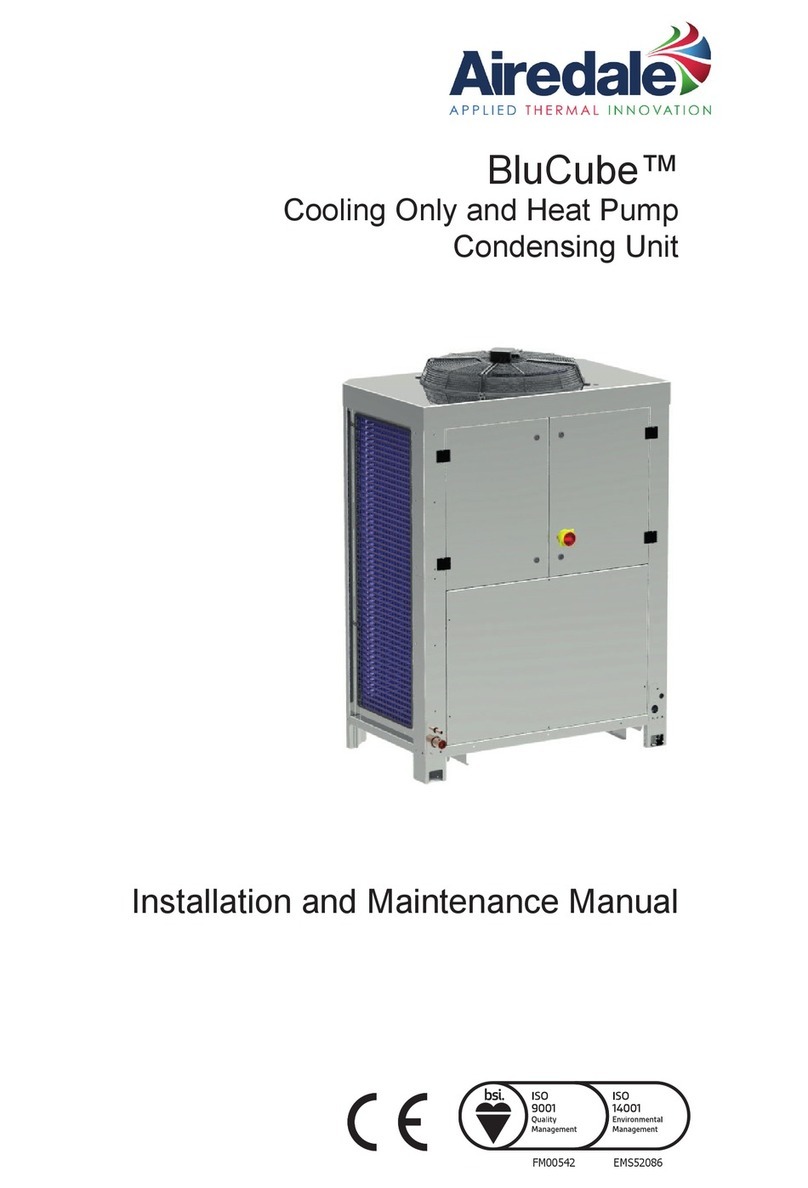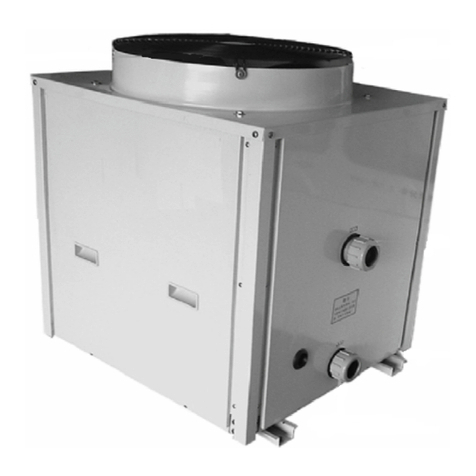
08 HYDRAULIC CONNECTIONS / CONDENSATION DISCHARGE
HYDRAULIC
CONNECTIONS
The choice and sizing of the hydraulic lines must be made by an expert who
must operate according to the rules of good technique and the laws in force,
taking into account that undersized pipes cause a malfunction.
To make the connections:
- position the hydraulic lines
- tighten the connections using the “spanner and counter spanner” method
- check for any leaks of liquid
- coat the connections with insulating material.
The hydraulic lines and joints must be thermally insulated.
Avoid partially insulating the pipes.
Do not over-tighten to avoid damaging the insulation.
Use hemp and green paste to seal the threaded connections; the use of Teflon
is advised when there is anti-freeze in the hydraulic circuit.
The condensation discharge network must be suitably sized (minimum inside
pipe diameter 16 mm) and the pipeline positioned so that it keeps a constant
inclination, never less than 1%.The discharge pipe is connected directly to the
discharge tray, positioned at the bottom of the side shoulder underneath the
hydraulic fixtures.
- If possible, make the condensation liquid flow directly in a gutter or a
“rainwater” discharge.
- When discharging directly into the main drains, it is advisable to make a
siphon to prevent bad smells returning up the pipe towards the room.
The curve of the siphon must be lower than the condensation collection
bowl.
- If the condensation needs to be discharged into a container, it must be
open to the atmosphere and the tube must not be immerged in water to
avoid problems of adhesiveness and counter-pressure that would interfere
with the normal outflow.
- If there is a height difference that could interfere with the outflow of the
condensation, a pump must be mounted:
- in a vertical installation mount the pump under the lateral drainage tray;
- in a horizontal installation the pump position must be decided according to
the specific requirements.
Such pumps are commonly found in commerce.
However, on completion of the installation it is advisable to check the correct
outflow of the condensation liquid by slowly pouring about ½ l of water into the
collection tray in about 5-10 minutes.
75 95 115
DIMENSIONS
Pipeline diameter mm 14 14 16
CONDENSATION
DISCHARGE



























